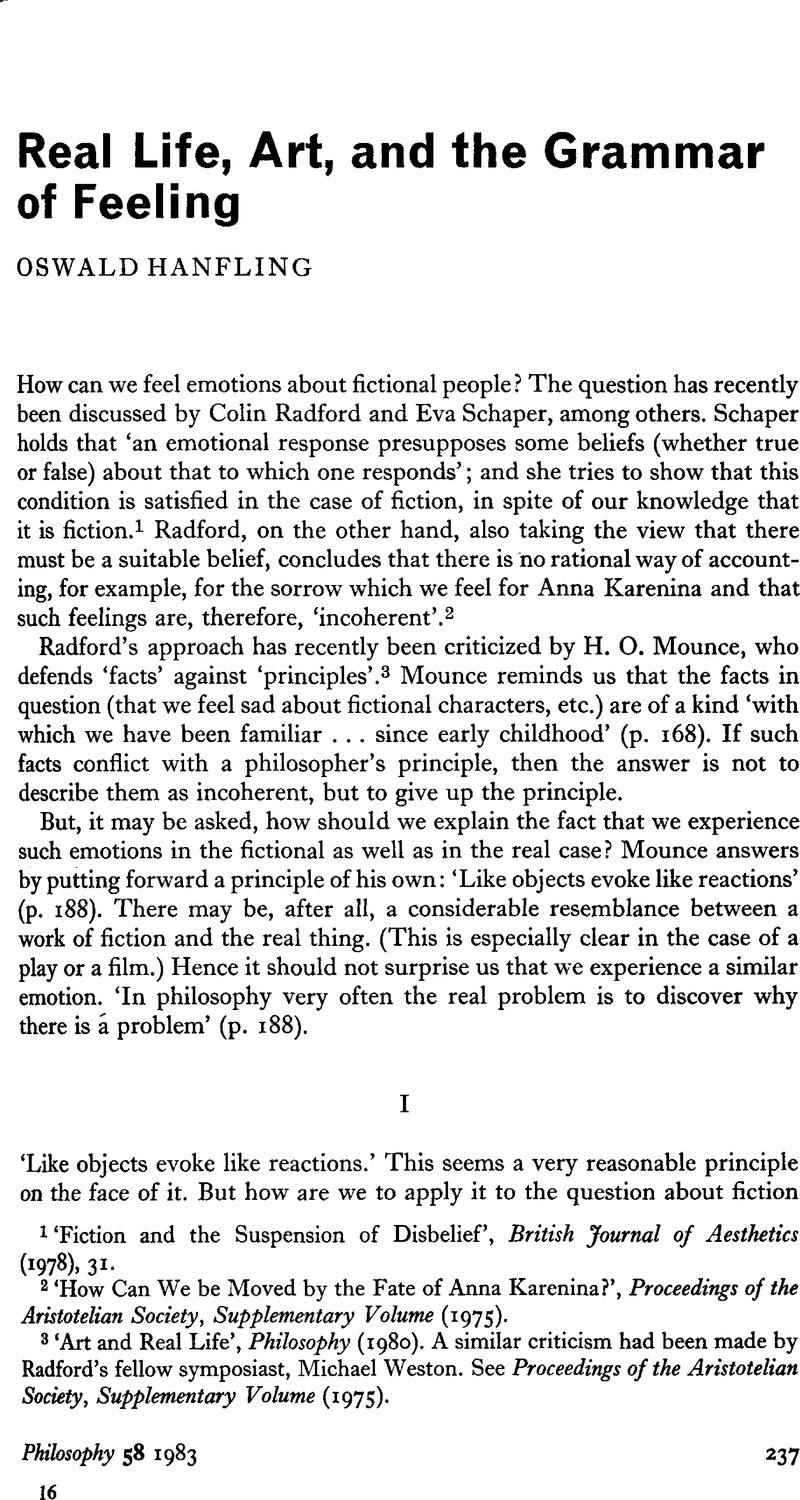Published online by Cambridge University Press: 30 January 2009

1 ‘Fiction and the Suspension of Disbelief’, British Journal of Aesthetics (1978), 31.
2 ‘How Can We be Moved by the Fate of Anna Karenina?’, Proceedings of the Aristotelian Society, Supplementary Volume (1975).
3 ‘Art and Real Life’, Philosophy (1980). A similar criticism had been made by Radford’s fellow symposiast, MichaelWeston. See Proceedings of the Aristotelian Society, Supplementary Volume (1975).
4 ‘Of Tragedy’, Hume's Essays, J. W. Lenz (ed.), 31-32.
5 Here and elsewhere I am grateful to Colin Radford for comments on an earlier draft.
6 Belief, 307. Price's account is rejected by Schaper.
7 Collingwood emphasized the particularity of such emotions. He argued that only an artist could give them adequate expression; and that‘a genuine poet, in his moments of genuine poetry, never mentions by name the emotions he is expressing’ (p. 112).
8 ‘What is a description of feeling at all? …Discussion of a comedian doing imitations, sketches. Suppose you wanted to describe the experience of the audience—why not describe first of all what they saw?’(Wittgenstein, Lectures and Conversations, 33). One may speak of occasional emotions in terms of either particular occasions or types of occasion. I shall not go into this.